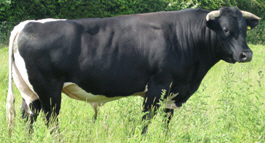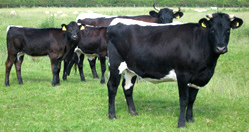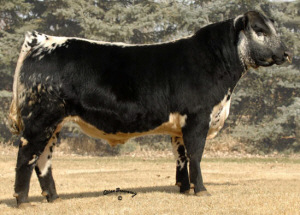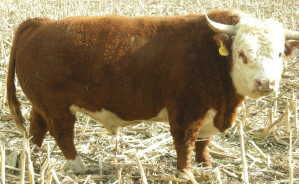



Gloucester
History
The Gloucester is one of the oldest breeds and it originated in the Severn Vale and throughout Gloucestershire, England as early as the 13th Century.
They were valued for their meat, milk (producing cheese) and as strong draught oxen. They were most popular around 1750 with the breed reaching from Devon to Essex and up to the Welsh coast but then the numbers decreased as disease, development of other breeds and arable farming increased.
 Photo courtesy of The Gloucester Cattle Society, www.gloucestercattle.org.uk |
Originally formed in 1919 the Gloucester Cattle Society was revived in 1973 initially to provide for the survival of the breed. The Society has been very successful and breed numbers have now grown to over 700 registered females. The cattle are again recognised for their contribution to the environment and superb beef and cheese.
The Gloucester is categorised as a rare breed by the Rare Breeds Survival Trust and its status is monitored on the Watchlist.
Characteristics
The Gloucester is a dual purpose breed with attention being paid to both its beef and milk/cheese producing qualities.
They are a black brown colour with a white tail, belly and a white streak on the back, the hair is fine and short. The breed is horned which are fine, wide and turn upwards with black tips. The breed in medium in size and is slow maturing but from this produces fine-grained marbled beef.
 Photo courtesy of The Gloucester Cattle Society, www.gloucestercattle.org.uk |
Statistics
Comparative
Distribution
The Gloucester is being conserved in the UK with around 1500 registered animals.
References (the above information was cited from the following sites)
www.gloucestercattle.org.uk


